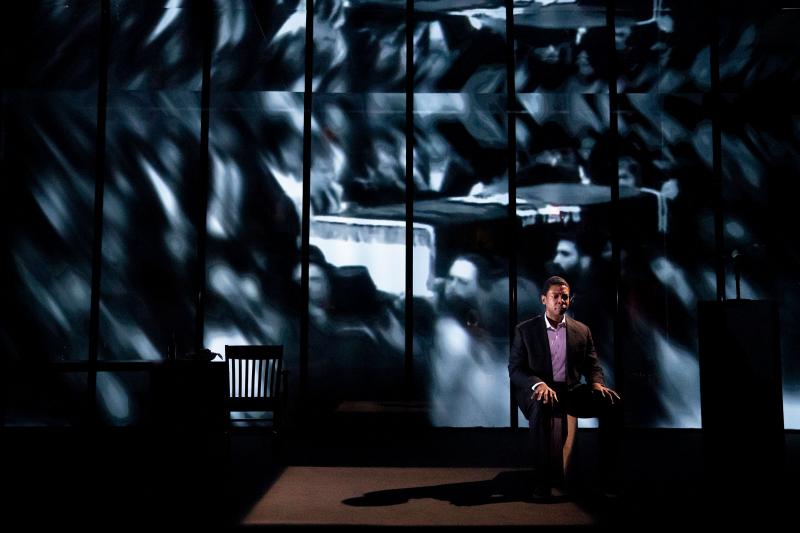Review: Michael Benjamin Washington Portrays Members Of A Divided Community in Crisis in Anna Deavere Smith's FIRES IN THE MIRROR
It's been a long-time point of pride among New Yorkers to be living in the most culturally and ethnically diverse spot on the planet, and given the history of the planet you can say that, comparatively, the city has done pretty well in encouraging a society of integration and acceptance.

(Photo: Joan Marcus)
But things happen, and isolated incidents sometimes cause bottled-up tensions to bubble up into headline making news that reveals how segregated and divided New York can actually be.
Such an isolated incident occurred in August of 1991 in the densely populated Crown Heights section of Brooklyn, a neighborhood consisting primarily of Lubavitcher Orthodox Jews and African Americans. After an auto accident involving members of a police-led motorcade for Rabbi Menachem Mendel Schneerson resulted in the car being driven by Yosef Lifsh killing 7-year-old Gavin Cato, the son of Guyanese immigrants, conflicting reports about the actions of the driver, witnesses, police, EMS workers and Hatzalah medical service led to three days of rioting, intensified by the beating and stabbing murder of Australian Yankel Rosenbaum.
Less than nine months later, playwright/actor Anna Deavere Smith's solo docu-drama "Fires in the Mirror, Crown Heights, Brooklyn and Other Identities", which would be named a Pulitzer finalist, opened at The Public Theater. Like her numerous plays to follow, most notably TWILIGHT: LOS ANGELES, 1992 (dealing with the Rodney King case), this captivatingly honest and illuminating piece is based on the playwright's interviews with public figures and private citizens; politicians, religious leaders, theatre artists, witnesses, participants and residents just trying to live their lives. They were crafted into a drama where, in its premiere production, Smith played over two dozen characters in a series of monologues that reflected the actions of these three days back at the American people.
As directed by Saheem Ali for Signature Theatre's striking new production, Michael Benjamin Washington does a beautiful job of revealing the empathetic humanity of a community of characters; both those who are rarely asked to publicly express their opinions and those who make a profession out of it.
The first half of the play sets us up with general discussions of race and identity, before delving into the events of that August morning and the aftermath. Washington begins as playwright and poet Ntozake Shange, cool and deliberate as she discusses the concept of identity.
"I am part of my surroundings and I become separate from them and it's being able to make these differentiations clearly that lets us have an identity."
As director/playwright George C. Wolfe, he's charmingly scattered in explaining the existence of blackness in relation to whiteness.
In between, there's a sweet, unforced humor to his portrayal of an anonymous Lubavitcher woman, who tells an amusing story of urgently needing assistance from a non-Orthodox neighbor when her baby accidently turns the stereo on to full blast on the Sabbath, when the handling of electronic equipment is forbidden.

(Photo: Joan Marcus)
As the presentation evolves into discussions of that August day, charges of the Jewish community's racism and the black community's anti-Semitism harshly surface. We see Norman Rosenbaum, brother of the slain Yankel, speaking at a rally where he questions the commitment of Mayor David Dinkins and Police Commissioner Lee Brown, two men of color, in arresting all who are responsible.
Carmel Cato, father of the dead child, speaks of a justice system totally run by Jews.
"They made that very clear to me - the Jewish people - they can throw the case out unless I go to them with pity."
Aided by a minimal number of costume pieces, Washington fluidly makes complete transformations to various ethnicities, ages and genders in a thoroughly engaging display of unchecked emotions.
Projection designer Hannah Wasileski and sound designer Mikaal Sulaiman recreate the atmosphere of the Brooklyn summer and set designer Arnulfo Maldonado, as might be expected, places a mirror in front of the audience, challenging us to find ourselves in the middle of what seems a perpetual conflict.


